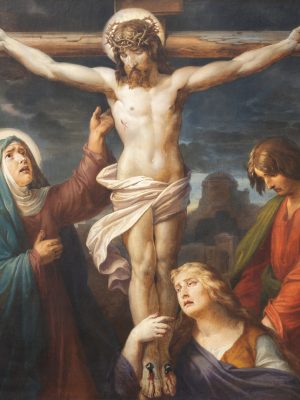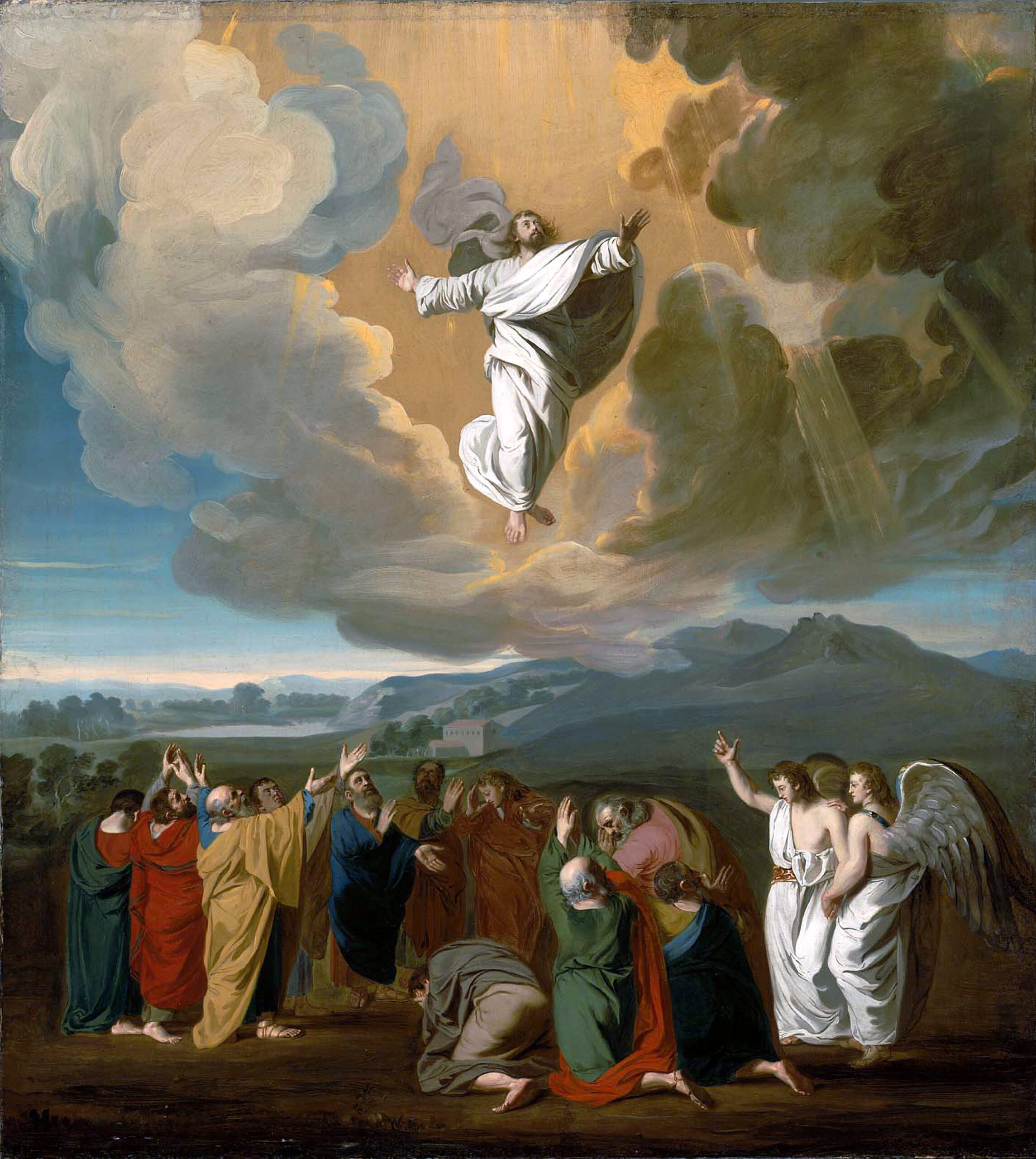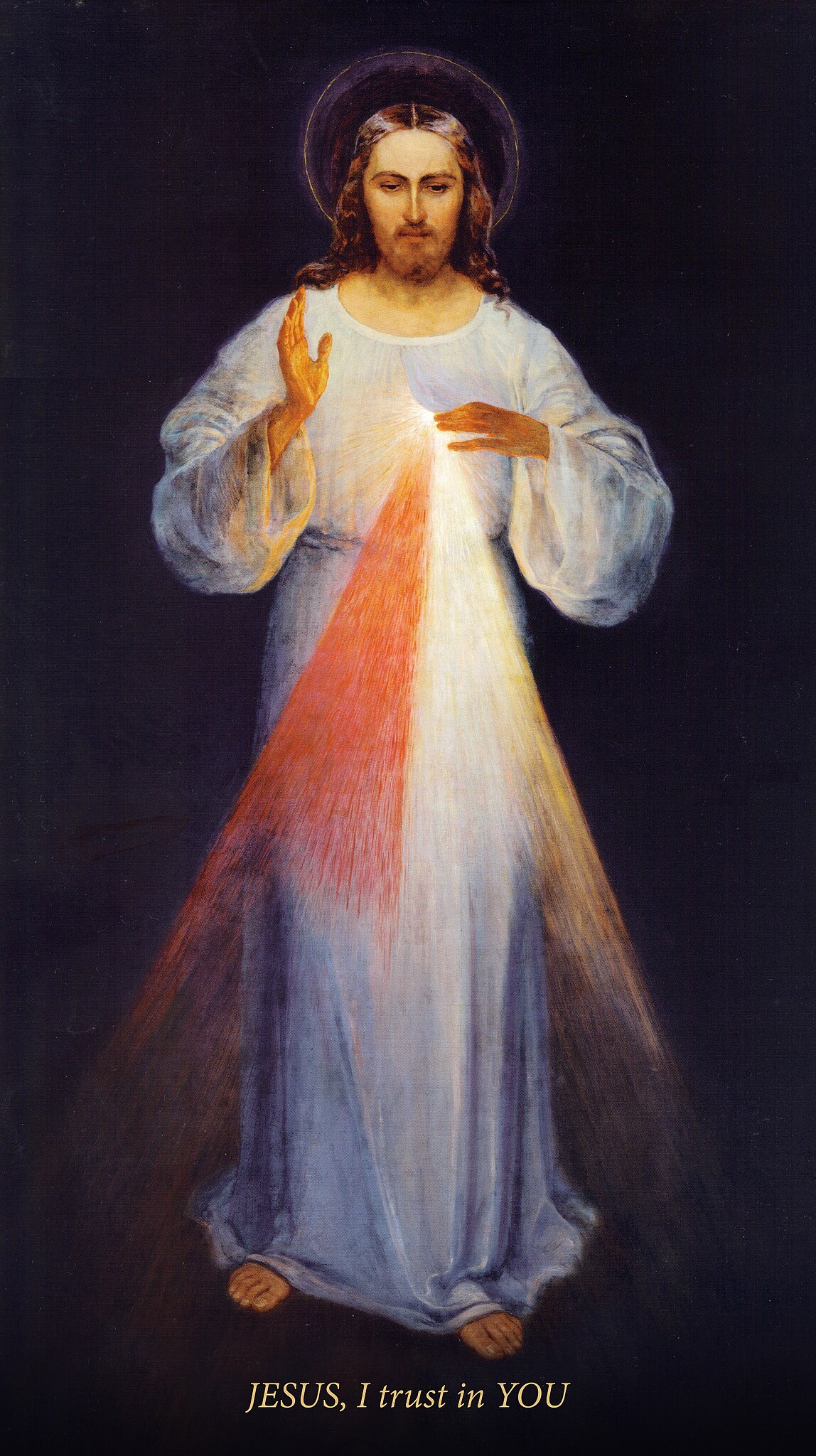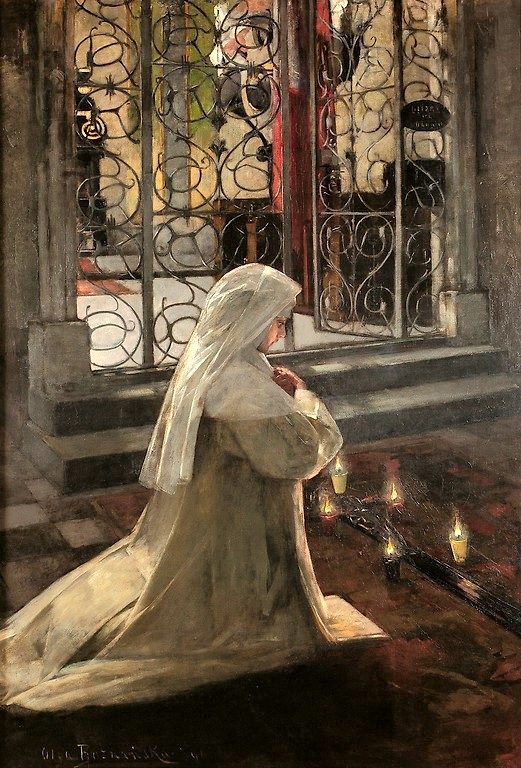Hello Beloved,
What a glorious time of the year we are in. I personally find it a great privilege to be invited by Our Lord Himself, through the Church He established, to accompany Him through His wilderness of sufferings.
At times we may hear some complaining and perhaps even be tempted ourselves to complain about the need to “give something up” for Lent. I, however, still haven’t gotten over the fact that I get to give things up for the One who gave His life for me.
- You mean I get to be with Christ through His wilderness journey?
- He wants our company through that desert?
- He wants our company – the company of the very people who caused His death?
What greater gift can forgiveness bring than to be received, with full love, acceptance, and trust, by the very One whom we put to death by our sins?
True love wants to suffer with the Beloved, even, if possible, to lessen His sufferings. I want the privilege of journeying with our Lord through these 40 days, to know what He experienced in any small measure, to understand as much as possible why He would have allowed the devil to tempt Him so.
We sing at the Easter Vigil what is known as the Exsultet: “O Happy Fault.” Happy fault? The fault of Adam that plunged the world into sin and separation from God? Happy the fault that destroyed the very creation of God and opened Hell?
Yes. Why? The rest of that sentence has the answer:
“Oh happy fault that merited such and so great a Redeemer.”
“God judged it better”, said St. Augustine, “to bring good out of evil, than to allow no evil to exist.”
St. Ambrose speaks even of the “fortunate ruin of Adam in the Garden of Eden in that his sin brought more good to humanity than if he had stayed perfectly innocent.”
From the Fall of Adam to the Advent of Christ, the promise of a Redeemer was sometimes eclipsed by Israel’s sin, but never thwarted. God is faithful to His promises.
From Eve, the mother of all the living in Adam, to Mary, the Mother of all the living in Christ, the new Adam, the coming of the Messiah was foretold, and protected by God through Abraham’s Seed – the Seed that would bless all the nations of the earth.
2,000 years following God’s promise to Abraham, there came one who called himself a “voice crying in the wilderness” and shouted, “Make straight the way of the Lord.” He stood in the Jordan River baptizing the people of Israel under the Old (Mosaic) Covenant, when into the water came the very One to Whom he pointed and of Whom he exclaimed:
“Behold, the Lamb of God, who takes away the sins of the world” (John 1:29).
It was at Our Lord’s Baptism that God the Father revealed who this Lamb of God was:
“ . . . and lo a voice from Heaven, saying, ‘This is my beloved Son, with whom I am
well pleased.’”
Guess who was among that crowd in the Jordan and heard the Voice from Heaven? Yes, Satan – the very one who has tried to destroy the Seed of the woman from the very beginning in the Garden to this day.
I can imagine Satan’s thoughts at hearing the Voice from above: “You mean, this is Him? This is the
One Who is God, the One whom all Heaven and Earth will worship?”
You remember that Satan fell from Heaven wanting to be like God and to be worshipped as God. This Jesus needs to be done away with!
The amazing thing is that it was not Satan who led our Lord into the desert – it was God Himself. St. Luke writes that, Jesus, “full of the Holy Spirit, returned from the Jordan, and was led by the Spirit for forty days in the wilderness, tempted by the devil” (Luke 4:1-2).
Why on earth would God lead our Lord – His Son – into the wilderness to be tempted by the devil?
It was for us, beloved. For us – to bring about a greater good, and yes, that we would have a merciful High Priest who was tempted in all points as we, yet without sin.
The wilderness had been a classroom for Israel throughout its wanderings. Just as Israel had been tested in the wilderness for 40 years in order to enter the Promised Land (Num 14:34; Deut 8:2), Jesus would be tested for 40 days that He might be strengthened for His mission of bringing not only Israel but the whole of mankind out of bondage from slavery to sin, into the freedom of the sons of God (Jn 8:34-36).
St. Mark tell us that the wilderness into which our Lord was led was no mere barren wasteland. Jesus was among wild animals in that desert (Mk 1:13). It was a place of devastation that glowed with intense heat; it was populated with wild animals and was considered to be the special preserve of evil spirits and the devil’s playground.
St. Ambrose beautifully compares the two Adams – the first who led us into sin, and the second who took on Adam’s flesh to redeem us:
Adam is cast out of Paradise (i.e., the Garden of Eden) into the desert, whereas Christ, the new Adam, goes into the desert on our behalf to come forth from that wilderness of temptation to lead us back to Paradise.”
Our Lord knew that He had received power from God the Father to fulfill His mission. All of Satan’s attempts were simply to try to persuade Jesus to use that power in a way that God the Father did not intend.
The devil’s tactics with us are no different.
The Gospels do not all record Satan’s three attacks on our Lord in the same order. We will use St. Luke’s order because St Luke’s Gospel was written specifically to show the humanity of Christ, and it was only in His humanity that our Lord could be tempted.
OUR LORD’S FIRST TEMPTATION (Luke 4:3-4)
The devil said to him, “If you are the Son of God, command this stone to become bread.”
And Jesus answered him, “It is written, ‘Man shall not live by bread alone.’”
The devil’s tactics are not new. He tempts Jesus with food, just as he temped Adam and Eve 4,000 years earlier. But Our Lord knew God the Father’s faithfulness and, unlike Adam, trusted that God the Father would provide His every need.
And so, in response to the devil’s temptation for Jesus to turn stone into bread, Our Lord quoted Deuteronomy 8:3: “It is written, ‘Man shall not live by bread alone.”
Deuteronomy contains the passage in which God exhorted the people of Israel to keep His commandments and to remember all the ways through which He had led them in the desert. It was a reminder that the God who provided them with manna in the wilderness those 40 years is ever trustworthy and would meet their every need . . . just as He will meet ours.
Jesus, unlike us, had the power to do and get whatever He wished, but He trusted His Father in Heaven and had no need to display His power to the devil; He wished to demonstrate perfect detachment to everything but to God’s will.
And so, the defeated enemy tried a second tactic . . .
OUR LORD’S SECOND TEMPTATION (Luke 4:5-8)
And the devil took him up, and showed him all the kingdoms of the world in a moment of time, and said to him, “To you I will give all this authority and their glory; for it has been delivered to me, and I give it to whom I will. If you, then, will worship me, it shall all be yours.”
And Jesus answered him, “It is written, ‘You shall worship the Lord your God, and him only shall you serve.’”
Satan, Lucifer’s name after his fall from Heaven, is the Hebrew word for enemy, legal accuser, the arch-enemy of man, Our Lord’s accuser before God the Father.
Satan knew that Jesus was called to rule over the nations. He only suggests a shortcut to that end – which is exactly what he suggested to Adam and Eve –
- God told them they should not eat the fruit of the forbidden tree.
- Satan came and tempted Eve by telling her that if she ate from that tree she would be like God.
- Well, what is wrong with that? Doesn’t God want us to be like Him? Do the Scriptures not say we are being conformed to His image and that one day we shall awake in His likeness?
- So what was wrong with the devil’s suggestion to Eve?
- It was to be like God without God. It is a temptation to idolatry – to give first place to someone or something other than God.
Satan’s second temptation to Our Lord was that “Homage to him (Satan) and acknowledgment of his power is to be the price of ‘all the kingdoms, and the glory of them.’”
Beloved, take note that Satan’s method is always to tempt first by what is lawful and then to suggest what is absolutely sinful. Again our Lord quoted from Deuteronomy:
It is written, ‘You shall worship the Lord your God and Him only shall you serve” (Lk 4:8; cf. Deut 6:13, 10:20).
Satan was not able to persuade Jesus, in the first instance, to distrust God’s Providence in meeting his physical needs, and, in the second temptation to persuade Our Lord to take, in advance of God the Father’s timing, what was legitimately His – i.e., the kingdoms of the world.
And so the Evil One tries yet again . . .
OUR LORD’S THIRD TEMPTATION (Luke 4:9-12)
“And he took him to Jerusalem, and set him on the pinnacle of the temple, and said to him, ‘If you are the Son of God, throw yourself down from here; for it is written, ‘He will give his angels charge of you, to guard you,’ and ‘On their hands they will bear you up, lest you strike your foot against a stone.’”
In other words, Jesus, do something spectacular, prove you are the Messiah, the Son of God. And Jesus answered him, “It is said, ‘You shall not tempt the Lord your God.’”
Our Lord bore every evil attempt of the devil.
Why?
For us.
All that our Savior did, He did for us, which is why part of our Baptismal Confession is to renounce the works of Satan (1 Cor 2:8-10; Eph. 2:1-8; CCC 1237).
Our Lord was “made like His brethren in every respect, so that He might become a merciful and faithful high priest” (Heb. 2:17), “tempted as we are, yet without sin” (Heb. 4:15).
Jesus was tempted first to use His power over material objects, next over people, and lastly over God, to manipulate God the Father. Clearly, Our Lord rejected the way of power and glory and accepted the way of suffering and the cross.
The Catechism of the Catholic Church (CCC) points out that through His 40 days of temptation, “Jesus fulfills Israel’s vocation perfectly: In contrast to those who had once provoked God during 40 years in the desert, Christ reveals Himself as God’s Servant, totally obedient to the divine will.”
In all 3 temptations, Jesus fulfills the command that is at the heart of Judaism:
“Hear, O Israel: The Lord our God is one Lord; and you shall love the Lord your God with all your heart, and with all your soul, and with all your might.”
The devil knew he had lost this round, and so, St. Luke writes, “And when the devil had ended every temptation, he departed from him until an opportune time.”
And he does the same with us; he departs from us until an opportune time when he can again tempt us through those 3 avenues inherited from our first parents: the lust of the flesh, the lust of the eyes, and the pride of life (1 Jn 2:16).
- The lust of the flesh = stones into bread
- The lust of the eyes = the kingdoms of the world
- The pride of life = throw yourself down, prove who you are, Jesus – do a trick.
Our Lord began His public ministry by allowing Himself to be tempted by the devil and ended it three years later by allowing Himself to be crucified by those He came to save – when only one week prior, He was cheered by the same crowds who hailed Him as their Messiah.
They were right. He was (and is) their Messiah. But they wanted a Messiah of their own making, one who would set up a political kingdom, not the Kingdom the true Messiah came to bring. They wanted a reigning King, not a dying Lamb.
At the close of the Lenten season, as we approach Easter, we will celebrate Palm Sunday with much joy. For me, however, it is a deeply grievous occasion, knowing something of the blindness that covered the eyes and hearts of those who cried, “Hosanna to the Son of David.” Indeed He was (and is) David’s son, and God’s Son. He came, said St. John, to His own and His own received Him not.
O Jerusalem, Jerusalem, killing the prophets and stoning those who are sent to you! How often would I have gathered your children together as a hen gathers her brood under her wings, and you would not! Behold, your house is forsaken. And I tell you, you will not see me until you say, “Blessed is He Who comes in the Name of the Lord!” (Luke 13:34-35)
Those are the words we say, Beloved, at every Holy Mass:
“Holy, Holy, Holy, Lord God of Hosts,
Heaven and earth are full of Your glory, Hosanna in the highest Blessed is He Who comes in the Name of the Lord, Hosanna in the highest.”
How is it that we can say, “Blessed is He Who comes in the Name of the Lord!”?
We can say those words because we DO see Him – under the appearance of Bread and Wine.
Some folks argue: But God is not Bread. And they are right. He is no more Bread than He is a Man. But He became Man for our salvation, and went a further step of condescension and became our Food. Is anything impossible for God? Is there any limit to the depth of His love for us?
Cling to Christ dear ones, and to the Blessed Virgin Mary who gave up her Son for us. Live the whole Gospel – live as if it were true – because it is. Be a light shining in the darkness; lead the way not only for unbelievers but even for those who call themselves believers and have little knowledge of their Faith and of the God who loved them and gave Himself for them.
Hold nothing back from God. We are the richest, most privileged people in the world who have the only message of eternal life. A message that is desperately needed by most of the world today.
Whatever you do to honor Our Lord this Lent, Beloved, I pray you will count it a privilege to sacrifice for Him who gave His all for us, and who died that we might have life, now and forever in eternity with Him. God bless you.








